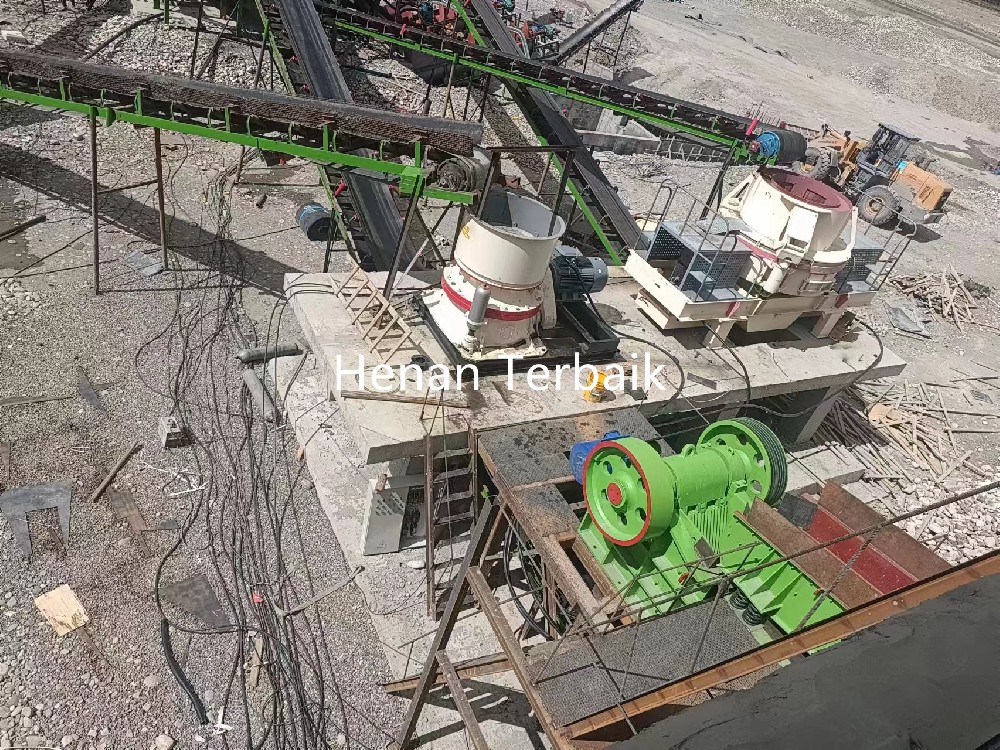Graphite is an essential mineral with diverse applications ranging from batteries to lubricants. Henan Terbaikmachinery, a leader in mining crushing equipment, specializes in providing comprehensive solutions for graphite ore processing. This article will delve into how graphite ore is processed, the various methods employed, and why processing is crucial for extracting valuable graphite. Our expertise is tailored for our main customer groups across Southeast Asia and African countries.
How is Graphite Ore Processed?
The process of graphite ore processing begins with the extraction of graphite from the earth, typically through mining operations. Once the ore is extracted, it undergoes several critical steps to separate the valuable graphite from other materials.
Crushing: Initially, the ore is crushed using specialized machinery to reduce it into smaller, manageable pieces.
Grinding: The crushed ore is then ground into a fine powder to facilitate the separation of graphite from other minerals.
Flotation: This is a key method in graphite processing, where chemicals are added to the slurry to selectively bind with graphite particles. The graphite attaches to air bubbles and floats to the surface, creating a froth that can be skimmed off.
Concentration: The froth containing graphite is further processed to increase its purity, typically through additional flotation or chemical treatment.
Drying: Finally, the concentrated graphite is dried to remove any remaining moisture, making it suitable for various applications.
What Are the Methods of Graphite Processing?
Several methods are employed in the processing of graphite, each suited for different types of ore and desired purity levels:
Flotation Processing: As mentioned, this method is the most widely used for concentrating graphite. It utilizes the differences in hydrophobicity between graphite and other minerals.
Hydrocyclone Separation: This method uses centrifugal force to separate materials based on size and density, providing an effective way to classify graphite.
Chemical Processing: In some cases, chemical methods are employed to dissolve unwanted minerals, allowing for the recovery of high-purity graphite.
Thermal Treatment: In certain applications, graphite is subjected to high temperatures to improve its crystalline structure and properties.
Each method has its advantages and is selected based on the characteristics of the graphite ore being processed.
How is Raw Graphite Processed?
Raw graphite is typically processed through a combination of the methods outlined above. After extraction, the raw ore is crushed and ground, followed by flotation to achieve a concentrated form of graphite. Depending on the application, further purification steps may be necessary to remove impurities and achieve the desired grade.
Does Graphite Need to Be Processed?
Yes, graphite must be processed to enhance its quality and usability. Raw graphite often contains impurities that can affect its performance in various applications. Processing improves its electrical conductivity, lubricating properties, and overall quality, making it suitable for use in batteries, lubricants, and other industrial applications. Henan Terbaikmachinery offers state-of-the-art graphite processing machines and plants to ensure efficient and effective processing.
Conclusion:
Henan Terbaikmachinery is committed to providing comprehensive solutions for graphite ore processing. With a deep understanding of the mining industry and a focus on Southeast Asian and African markets, we offer advanced equipment and technology tailored to your specific processing needs. For more information on our graphite processing plants and machinery, please contact us to discover how we can support your operations.















